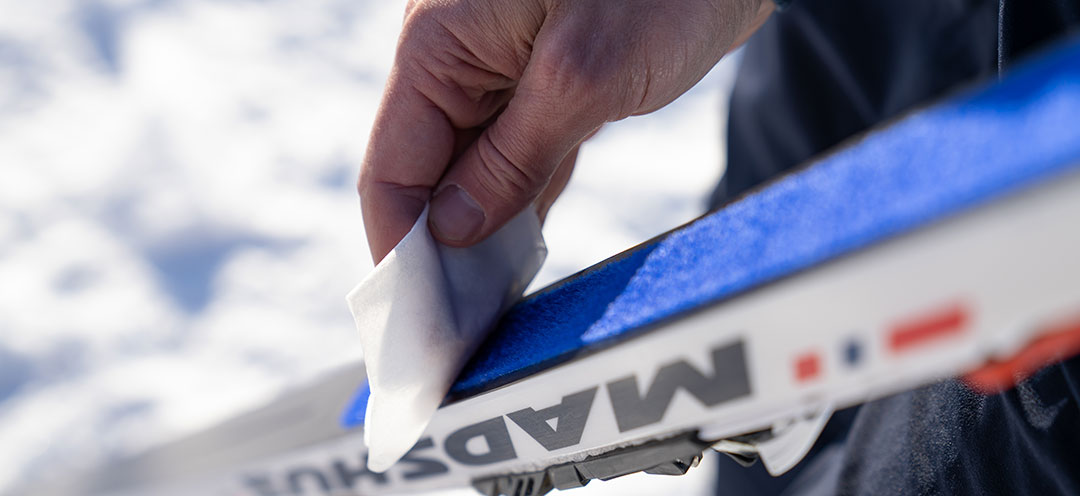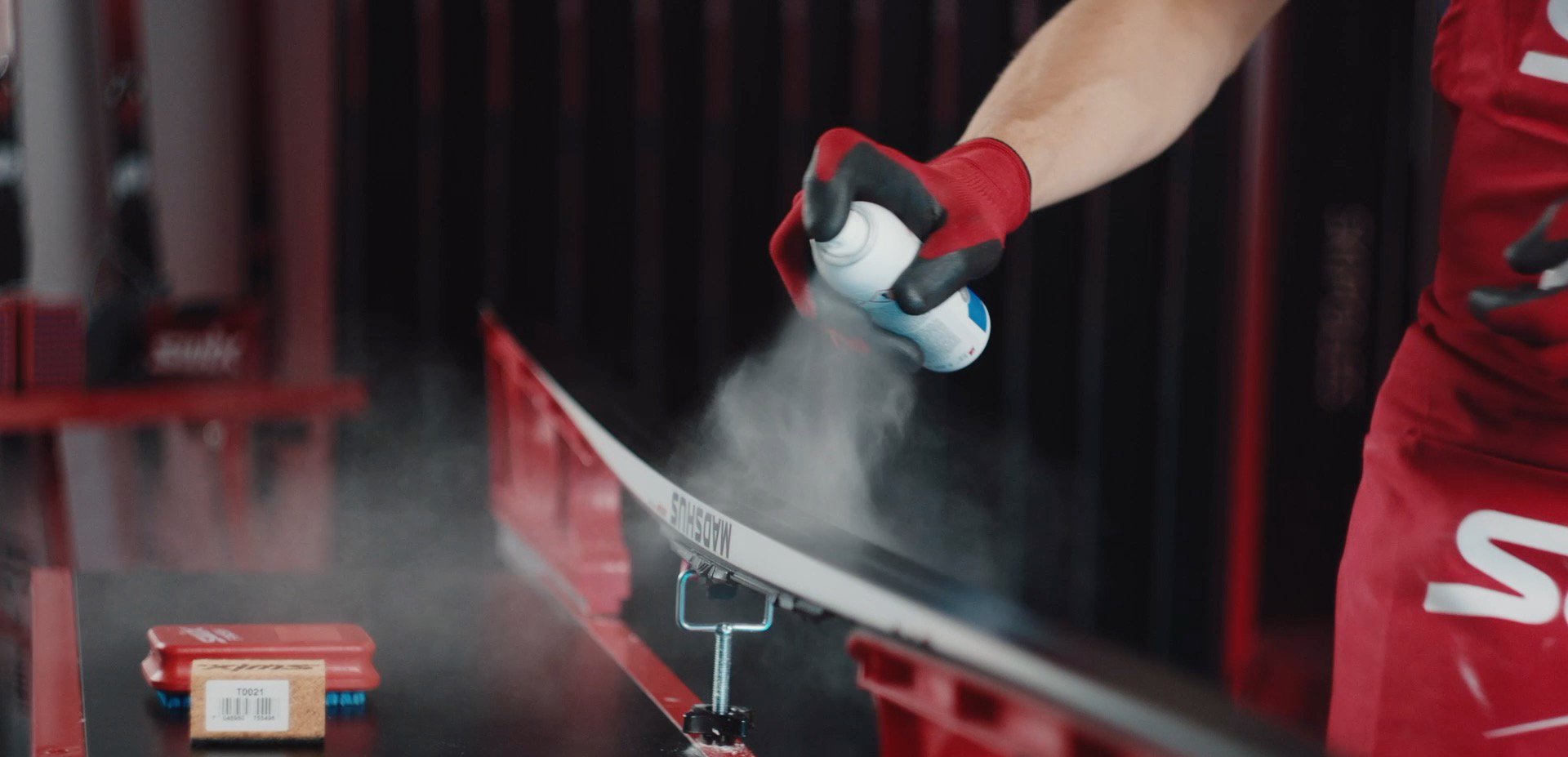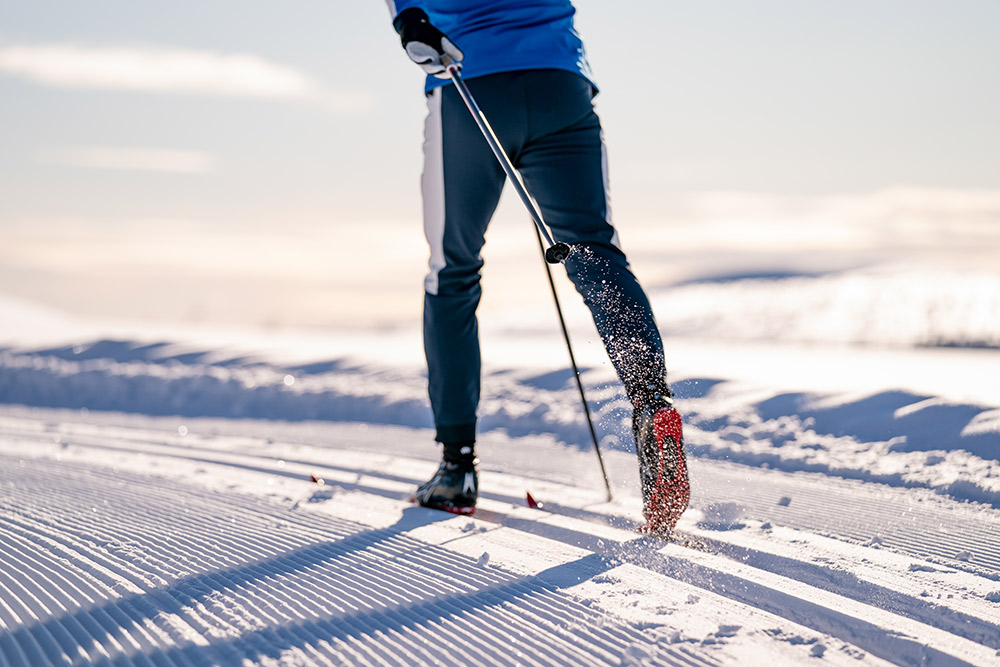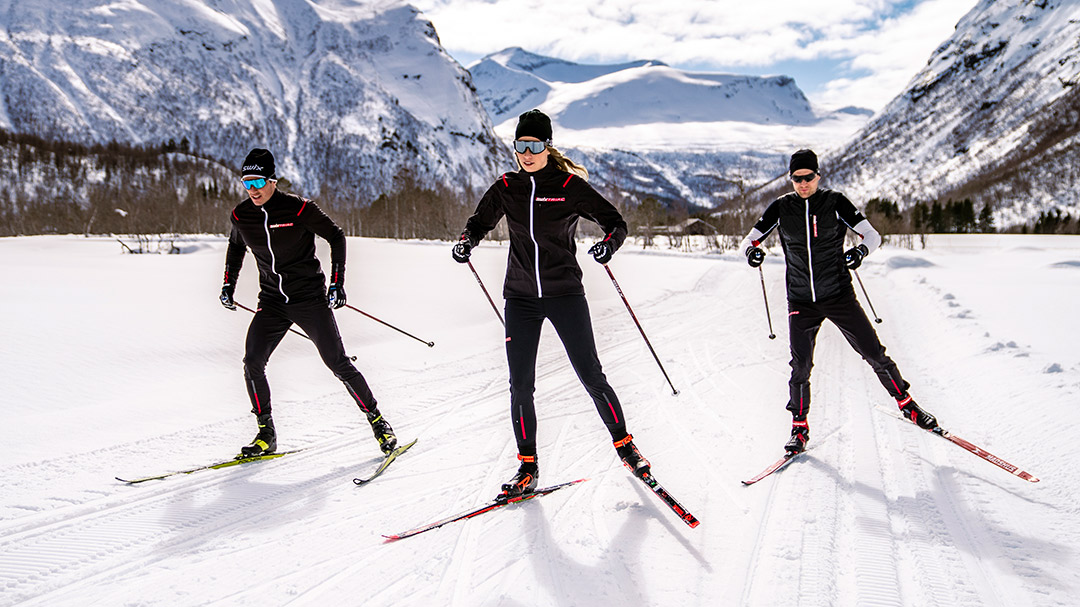Ski waxing for beginners: What you need to know
That’s why training with skin ski waxes is so easy: it’s easy to get a good glide without your own waxing booth. Here are all the answers that make it easier for you to enjoy your next ski trip with super skis.
Let’s start with the basics. In cross-country skiing you have two styles: Classic, which requires grip under the skis, and skating, which only requires gliding.
See also: Finding the right pole length
Classic skiing = skin skis or wax skis
You want to have a good grip when skiing classically. Grip wax is applied to the middle of the ski, i.e., the area under the binding. This is called a lubrication zone. On the front and rear areas of the ski, you want to have good glide.
How do you find the lubrication zone? The store that sold you the skis should have marked the waxing areas.
For cross-country skiing using the classic technique, either skin skis or wax skis are used.
See also: Three steps to get more out of your skin skis

Skin skis also need glide wax
It has become popular to use skin skis. Skin skis give you good grip without needing an application of grip wax or klister. You still need to make sure you have a good glide.
The easiest way to improve the glide is to use a liquid glide wax. In this article we will explain how to use liquid glide wax correctly and in a recommended way.
To put it simply: All skis – whether skin, wax or skating – should have an application of glide wax.

Skin skis: Skin maintenance
The skins must also be treated in order to get the best possible ski trip. We recommend that you do this to your skins at regular intervals:
- Impregnation of skin skis Impregnation makes the skins less able to absorb water from the snow. When the skins absorb water, it can freeze. This will cause you to lose grip. Impregnation helps to counteract this.
- Skin ski cleaning: Cleaning the skins is important to remove dirt and pollutants from the trail found stuck under the skis after use.
For those who want even better results, we have launched Swix Skin Boost. You can read more about the product on this page.
What you need to take care of your skin skis:
Wax skis need grip wax or klister
Use grip wax or klister to get a grip. You want a good grip to be able to execute the proper classic technique.
Further reading: Four easy steps to a good grip
Remember to place grip wax and klister only within your lubrication zone.
 A good grip is important in order to be able to go diagonally.
A good grip is important in order to be able to go diagonally.
Grip wax is selected according to the temperature and conditions on the day you go skiing. If it is cold, it may be enough to use Blue Extra, a type of grip wax. At Swixsport.com we have grip waxes for all kinds of conditions and temperatures down to +3 degrees.
Learn how to apply grip wax to skis in this video.
Correct use of klister
Klister is most often used when there is wet snow and temperatures above freezing. The klister has the same function as the skins on skin skis or grip wax on wax skis: to ensure that you have a grip when you use the classic technique.
In this video tutorial, we will show you how to lubricate your skis with klister.
Skating skis just have to glide!
It is important to distinguish between the two styles we have in cross-country skiing: classic and skating.

In the picture you can see skating on skis. Neither grip wax nor or klister are used here.
You have now had an introduction to classic skiing, i.e., skis that need a grip. Skating skis, on the other hand, only need to be able to glide! In other words, you don't need any skins, grip wax or klister to use them.
Further reading: Guide to cross-country skiing jackets and pants
Instead, it places greater demands on good gliding. On skating skis, the entire ski must glide – from tip to end.
Liquid glide waxes from Swix:
Here too, a liquid glide wax is the easiest alternative, but at Swix we recommend heating the glide wax at regular intervals. This is something sports stores can help you with. If youwant to try yourself, we will show you how in this video.
A bit of prepping is better than none
There are countless methods to get good skis. The professionals you watch on TV can, for example, have multilayered skis with glide wax, walk on powder or use klister under grip wax to get the effect of both. Please take a look at this page's Swix training videos if you would like to understand the options available when it comes to preparing skis.
Further reading: Northug’s tips for better performance
In any case, our challenge is to make it as simple as possible! Using a floating glider is much better than never gliding your skis and skin skis are even better if you occasionally remember to impregnate the skins!
Happy skiing.

